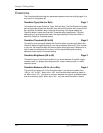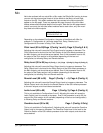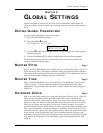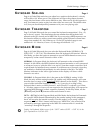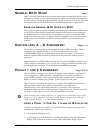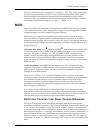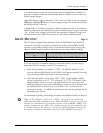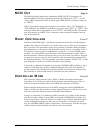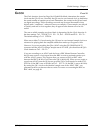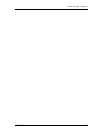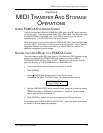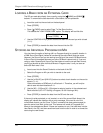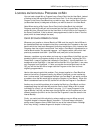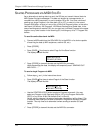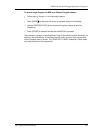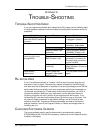
Global Settings: Chapter 8
QS7/QS8 Reference Manual 118118
CLOCK PAGE 19
The Clock function, found on Page 18 of Global Edit Mode, determines the sample
clock rate the QS will use. Normally the QS uses its own internal clock to determine
the actual number of samples per second. Remember, the sounds in the QS are based
on digital recordings. These recordings are made up of several thousands of tiny
digital audio ÒsnapshotsÓ, otherwise known as samples. These samples are played
so quickly and run so close together, they all appear to the human ear to be one
sound.
The rate at which samples are played back is determined by the Clock function. It
has four settings: Int 48kHz, Int 44.1k, Ext 48kHz and Ext 44.1k.
The default setting is Int 48kHz.
When set to either Internal setting, the QS uses its own internal sample clock as a
reference for playing back the sampled sounds that make up a Program or Mix.
However, if you are recording the QS to ADAT using the QSÕs [DIGITAL OUT]
connector and the ADAT is using a sample rate of 44.1 kHz, you should set the QSÕs
Clock function to Int 44.1k.
If you are recording to an ADAT and also have a BRC Master Remote Controller,
the QS must receive a clock signal from the BRC in order to maintain perfect sync
with the ADAT system. This requires that you connect a BNC-to-BNC cable
between the BRCÕs 48 kHz Clock Out to the QSÕs [48 kHz IN]. When you are ready to
record onto ADAT from the QS, be sure to set the QSÕs Clock function to either Ext
48kHz (if the BRC is set to 48 kHz) ot Ext 44.1k (if the BRC is set to 44.1kHz).
By setting the QSÕs clock to the identical sample rate of the ADAT/BRC, you
guarantee perfect sync between the two units. For more on connecting the BNC-to-
BNC cable, see page 26.



